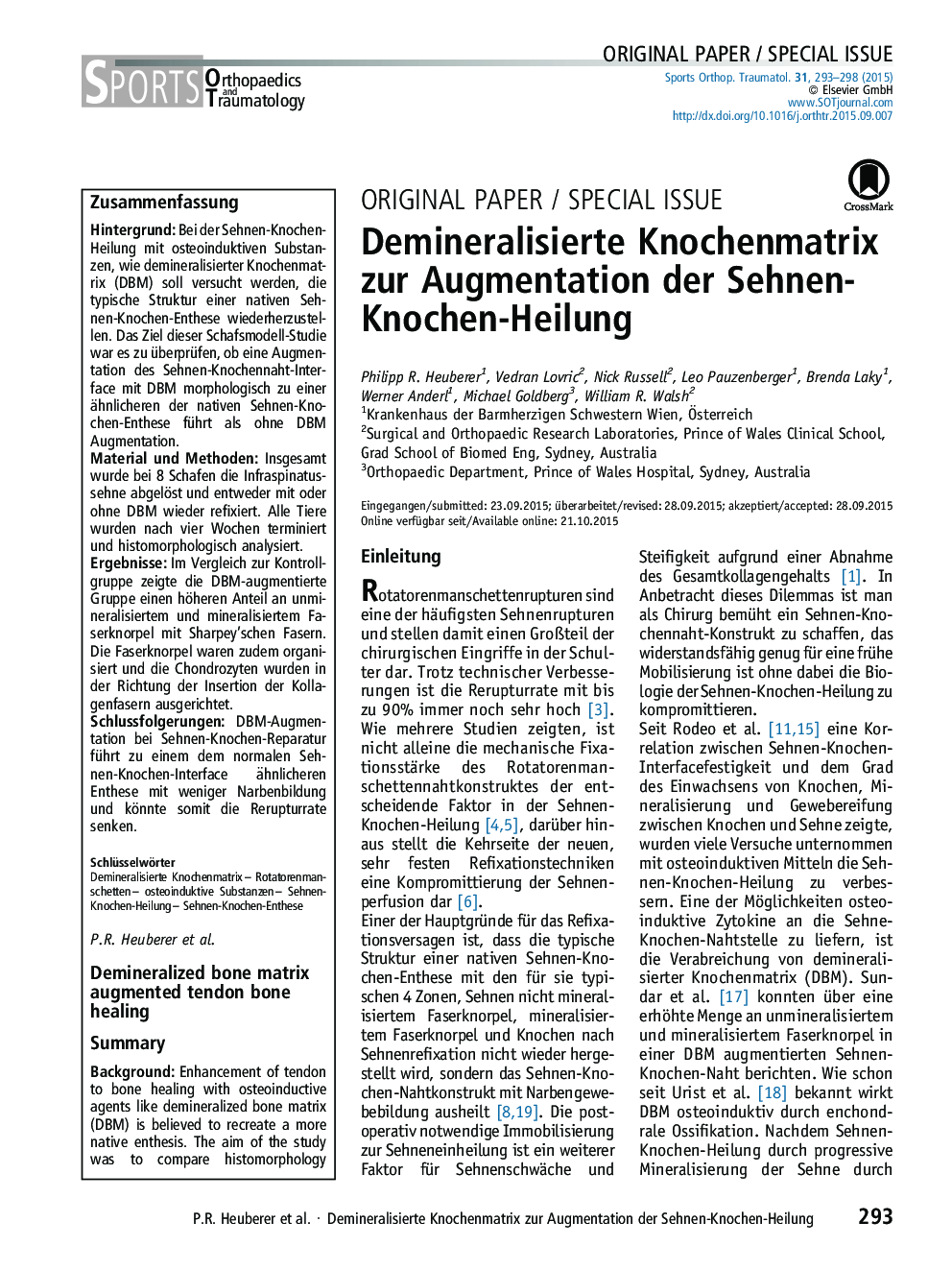| Article ID | Journal | Published Year | Pages | File Type |
|---|---|---|---|---|
| 2740217 | Sports Orthopaedics and Traumatology | 2015 | 6 Pages |
ZusammenfassungHintergrundBei der Sehnen-Knochen-Heilung mit osteoinduktiven Substanzen, wie demineralisierter Knochenmatrix (DBM) soll versucht werden, die typische Struktur einer nativen Sehnen-Knochen-Enthese wiederherzustellen. Das Ziel dieser Schafsmodell-Studie war es zu überprüfen, ob eine Augmentation des Sehnen-Knochennaht-Interface mit DBM morphologisch zu einer ähnlicheren der nativen Sehnen-Knochen-Enthese führt als ohne DBM Augmentation.Material und MethodenInsgesamt wurde bei 8 Schafen die Infraspinatussehne abgelöst und entweder mit oder ohne DBM wieder refixiert. Alle Tiere wurden nach vier Wochen terminiert und histomorphologisch analysiert.ErgebnisseIm Vergleich zur Kontrollgruppe zeigte die DBM-augmentierte Gruppe einen höheren Anteil an unmineralisiertem und mineralisiertem Faserknorpel mit Sharpey'schen Fasern. Die Faserknorpel waren zudem organisiert und die Chondrozyten wurden in der Richtung der Insertion der Kollagenfasern ausgerichtet.SchlussfolgerungenDBM-Augmentation bei Sehnen-Knochen-Reparatur führt zu einem dem normalen Sehnen-Knochen-Interface ähnlicheren Enthese mit weniger Narbenbildung und könnte somit die Rerupturrate senken.
SummaryBackgroundEnhancement of tendon to bone healing with osteoinductive agents like demineralized bone matrix (DBM) is believed to recreate a more native enthesis. The aim of the study was to compare histomorphology between a reattached infraspinatus tendon with DBM augmentation and without DBM in an ovine model.Material and MethodsFrom a total of 8 sheep, the left infraspinatus tendon was detached from its insertion and reinserted into a prepared bone bed in a transosseous equivalent with and without DBM administration in 8 sheeps. All animals were sacrificed after four weeks and histomorphologic analysis was performed.ResultsDBM augmentation resulted in increased amounts of fibrocartilage and mineralized fibrocartilage compared to the control group without DBM. Fibrocartilage was organized and chondrocytes were orientated in the direction of the insertional collagen fibres.ConclusionsDBM augmentation of a tendon to bone repair leads to more organized tendon to bone interface with less scar formation and a morphology closer to a normal enthesis which may reduce retear rates.
